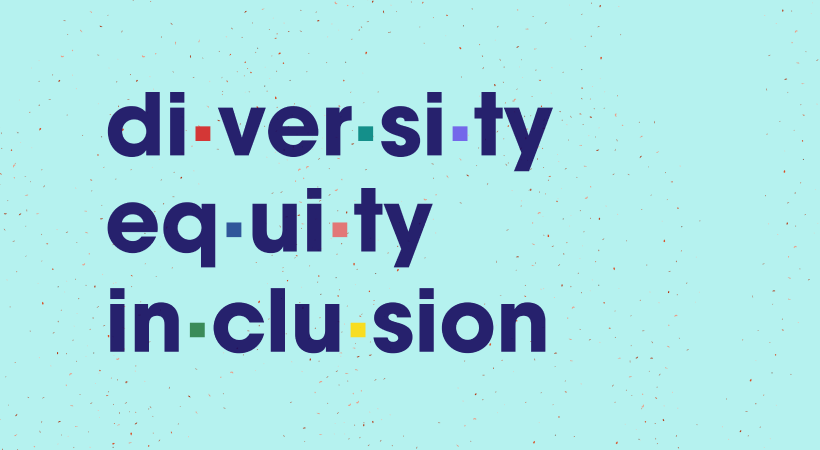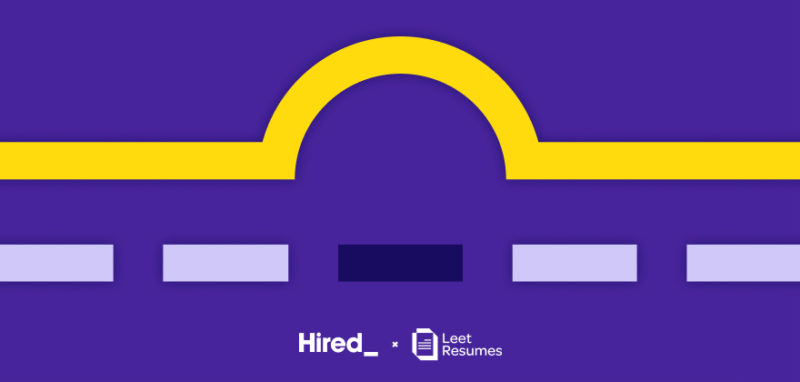
What is DEI? How Does it Improve the Sales & Tech Job Search Process?
A survey of tech and sales talent revealed there’s some confusion around the acronym DEI, prompting some respondents to ask, “what is DEI?” In this article we’ll explain it as well as explain how Hired, as a company and a tech and sales career marketplace, helps jobseekers and employers experience more equitable hiring.
What is DEI?Diversity, equity, and inclusion (DEI), together, are indicators of a progressive and supportive workplace centered around employee wellbeing and sense of belonging. In a field as forward-thinking and transformative as tech, DEI provides the necessary foundation for greater innovation through a range of voices, experiences, and backgrounds.
Diversity
The first pillar of DEI, diversity, signifies the presence of difference in characteristics including:
- Ethnicity
- Race
- Gender
- Age
- Sexual orientation
- Disability
- Socioeconomic status
- Religion
Diversity means everyone is welcome. In a less palpable sense, diversity also exists in the vein of thought. Different people bring different ideas and approaches spurring creativity and efficiency. In these areas, homogeneity can’t compete.
Therefore, to be competitive, it benefits organizations to consistently identify non-traditional talent. It creates more robust pipelines of candidates with new ideas to drive businesses forward.
Equity
Equity helps level the playing field by ensuring impartiality and equal access to opportunity for every individual through recognition of biases and barriers.
In the context of gender, data from our 2022 Wage Inequality Report shows despite progress, women are still overall less likely to receive an interview request than men. This situation could be described as an “opportunity gap.”
Equity means everyone has the opportunity to participate. A robust pipeline of diverse candidates will not have the chance to develop unless there are equitable processes in place to allow a variety of individuals to be considered.
It’s important to note that equity and equality are not interchangeable terms. While equality also aims to provide resources for everyone to succeed, it does not consider that people start on a different footing. Equity, on the other hand, accounts for these disparities by providing support, or opportunity, based on imbalances in power and privilege.
Inclusion
Inclusion, the last pillar of DEI, ensures the workplace is a safe space for every employee to engage and feel they belong. It means empowering employees to bring their most authentic selves forward and feel comfortable contributing their insights, knowing they will be heard.
Inclusion means everyone gets to contribute. It upholds diversity by embracing every identity and fostering a workplace for all individuals to thrive.
DEI gives everyone a seat at the table, creating opportunities for novel connections, pioneering conversations, and unprecedented insights.
What does DEI mean to Hired as a company?As a leader in diversity recruiting and hiring tools, we have a direct impact on equitable hiring and are committed to building equity in the hiring process. We are on a mission to empower connections between ambitious people and teams, but can’t accomplish it without supporting a diverse workforce. Embracing diversity helps us live out our values and drives our mission forward.
By putting people first, we prioritize development and wellbeing. Doing so helps people flourish and feel valued, knowing they can bring their best, authentic selves to work.
At Hired, we find strength through inclusion because what makes each person unique makes us all strong.
How Hired embraces DEI as an employerAs a company, we’re always evolving, but some of the ways Hired demonstrates DEI is following the principles when attracting and hiring talent.
For example, when we create job descriptions, we use tools like Textio to identify any language considered counter to our DEI efforts.
We support an employee resource group, or ERG, called Unite. They lead internal efforts in partnership with the People Team in the form of professional development, open discussions, and building awareness.
This year, one of Unite’s activities has been to host a book club featuring books by diverse authors. They also sponsor philanthropic activities.
Interested in working with us? See open roles here.
5 Specific DEI features and tools on Hired’s platform to help jobseekers and employersOne of the reasons leading talent organizations use Hired is to drive diversity in their hiring. Here are some of the features we’ve developed based on data and insights to reduce bias.
When employers use them, it creates greater equity for jobseekers and a more DEI-friendly environment. Along with our policy of including salary upfront in interview requests, these help improve gaps in expectations, wages, and opportunities.
1. Diversity Goals
We launched Diversity Goals last year as a new way for employers to prioritize outreach to underrepresented talent, without removing relevant matching candidates. Updated filters easily surface these jobseekers to recruiters and hiring managers.
Diversity Goals makes the impact of DEI in hiring clear. Companies with open positions using this feature more than doubled their pipeline of underrepresented candidates. Companies using Diversity Goals also had both a lower wage and expectation gap compared to companies who didn’t use the feature.
More good news is the amount of employers using Diversity Goals continues to grow rapidly, meaning companies and jobseekers will continue to see the benefits of DEI in action.
2. Salary bias alert
Our data continues to show groups who are paid less also expect lower salaries than their white, male counterparts – even if they have the same experience. In our 2022 Wage Inequality Report, we found race contributes to the expectation gap – with Hispanic women and Black women only expecting $0.91 to every $1 salary of their white male counterparts in 2021 Hired data.
The Salary Bias Alert feature addresses wage equality goals by notifying employers if they are offering a lower salary than they typically do for a given job role. This helps eliminate the impact of bias on a job offer and holds employers accountable.
3. Bias reduction mode
Bias, even when it’s not conscious, can impact sourcing decisions. Activating this mode removes jobseekers’ profile pictures and names so employers focus evaluations solely on skills and experience.
4. Salary Calculator
Hired’s Salary Calculator determines salary benchmarks based on real interview requests, helping jobseekers know their worth. It is a great tool to compare salaries in some of the top cities worldwide, depending on your years of experience. See what you could be making with a company on Hired!
Related: Evaluate the Job & Negotiate the Job Offer You Deserve
5. Assessments
Hired assessments enforce skills-based hiring by helping employers evaluate applicants’ skills remotely with customizable relevant, valuable, and consistent questions. These assessments help reduce hiring bias by leveling the playing field and standardizing evaluation processes.
Jobseeker resources: partners who support DEI“Technical assessments are a valuable tool for candidates to showcase their skills to employers because it goes beyond explaining what you do on a resume…it shows the employers how skilled you really are!”
Lupe Colangelo, Employer Partnerships Manager @ General Assembly
Numerous Hired partners promote opportunities for underrepresented jobseekers across upskilling, cross training, and community. By supporting and partnering with organizations like these we can help connect employers with a more diverse pipeline of employees:
- Baddies in Tech
- Blacks in Technology
- CodeYourFuture
- Coding Black Females
- Diversability
- Muslamic Makers
- Per Scholas
- QTBIPOC Design
- Sista Circle: BWiT
- Techqueria
Related Blog: Coding Bootcamps Non-Traditional Education for Tech Talent
Are you looking for a new role in sales or tech? Click here to create your free profile today. Are you an employer looking to drive DEI in your organization? Hired is here to help. By leveraging our platform’s innovative DEI tools and transparent salary data, build diverse teams and close critical wage gaps—one hire at a time.Want to learn more about how to advocate for DEI and be an ally? Watch the 2022 State of Wage Inequality in Tech: Close the Gap with Advocacy & Allyship Webinar below.
Related blog posts

Build Confidence and Take Control of Your Tech Job Search Series
The process of finding a job often feels overwhelming. It’s difficult to determine the best avenue...

Evaluate the Job & Negotiate the Job Offer You Deserve
Editor’s note: this is Part 3 in our series with our partner, Makers, “Build...

How to Answer “Tell Me About Yourself” Interview Question for Tech Talent
How to ace the number one question in interviews for tech roles, like software engineers –...

How to Handle an Employment Gap on Your Resume (Flip the Script!)
You’re not your work history Addressing an employment gap on a resume is one of the most...

How to Stand Out Behind the Screen: a Guide for Remote Candidates
Part of a Series: Setting yourself up for success as a remote candidate Editors note: this...
